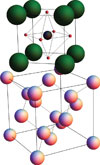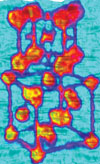
South Africa
The radical deterioration of market conditions since the end of last year had a negative impact on the interim results of infrastructure company Reunert. Revenue increased by 1% to R5,1 billion compared to a year ago, but the steep decline in volumes, particularly in the electrical engineering operations, resulted in operating profit decreasing by 27% to R531 million. Strong growth of 69% in net interest and dividend income coupled with a lower tax rate, limited the decline in normalised headline earnings per share to 16% at 232 cents per share.
Vodacom reported 14,5% growth in revenue to R55,2 billion for the year ended 31 March 2009, with data revenue alone increasing by 28,8% to R6,4 billion. EBITDA was R18,2 billion, an increase over last year of 10,5%. The company’s customer base grew 16,5% to 39,6 million, which included an increase in South African broadband customers of 80%.
Overseas
Business
Maxim reported net revenue of $339,7 million for its fiscal 2009 third quarter ended 28 March 2009, a 17% decline from the $410,7 million revenue recorded in the previous quarter and a fall of 30% compared to the equivalent period last year. GAAP diluted loss per share was $0,09, compared to a loss of $0,12 in the second quarter of 2009 and a profit of $0,19 in the third quarter of 2008.
Infineon Technologies reported results for the second quarter of the 2009 fiscal year, ended 31 March 2009. Revenues in the second quarter were 747 million Euros, down 10% sequentially and 29% year-over-year. Excluding the effects of currency fluctuations and acquisitions and divestitures, revenues decreased 11% sequentially and 32% year-over-year. Net loss from continuing operations for the second quarter was 150 million Euros, resulting in basic and diluted loss per share from continuing operations of 0,20 Euros. For the prior quarter, net loss from continuing operations was 116 million Euros, and basic and diluted loss per share from continuing operations was 0,16 Euros.
Silicon Laboratories’ expense controls, better than expected revenue and model gross margin resulted in better than anticipated earnings per share performance and solid cash generation in the quarter. First quarter revenue of $83,7 million declined 16% sequentially versus the original projection of a 20 to 25% decline. Strong operating performance allowed the company to remain profitable on a GAAP basis. First quarter GAAP gross margin was flat sequentially at 60,5%. R&D investment for the period declined to $26,1 million and SG&A declined to $23,4 million. GAAP diluted earnings per share was one cent, significantly better than originally anticipated.
NXP Semiconductors announced first quarter sales of $673 million, a comparable decrease of 29,4% from the fourth quarter of 2008. Adjusted EBITDA in the first quarter amounted to a loss of $71 million, down from a profit of $183 million in the first quarter of 2008 and down from a profit of $41 million in the fourth quarter of 2008. Adjusted EBITA showed a loss of $188 million this quarter compared to a profit of $41 million in the same period last year and a loss of $84 million in the previous quarter.
Companies
Microsemi has acquired Endwave’s defence electronics and security (D&S) business. Microsemi intends to combine Endwave’s high-frequency product portfolio with its own, creating one of the leading high-reliability RF product offerings in the market and covering the technology spectrum up to 100 GHz. Under the terms of the agreement, Microsemi is acquiring the D&S assets for a total equity value of $28 million in cash plus the assumption of specified liabilities. Microsemi expects the acquisition to be accretive immediately.
Epcos has acquired the development activities of MEMS microphones from Technitrol. The asset transfer agreement concluded between the two companies also includes patents. Although the specific purchase price has not been disclosed, it is thought to be in the mid single-digit million Euro range. This acquisition opens up the growth market for miniaturised MEMS microphones to Epcos. MEMS microphones are used especially in mobile phones and Bluetooth headsets. The market volume of these applications is currently in the triple-digit million Euro range.
Texas Instruments has expanded its MCU portfolio with the acquisition of Luminary Micro, the market-leading supplier of ARM Cortex-M3-based 32-bit MCUs. The Stellaris family is positioned for cost-conscious applications requiring significant control processing and connectivity capabilities. Financial details were not revealed.
Industry
More than 15 technology companies today announced the Wireless Gigabit Alliance (WiGig), an organisation formed to establish a unified specification for 60 GHz wireless technologies. The WiGig specification will allow devices to communicate without wires at gigabit speeds within a typical room. The group’s vision is to create a global ecosystem of interoperable products based on this specification, which will unify the next generation of entertainment, computing and communications devices at speeds more than 10 times faster than today’s wireless LANs. Member companies include Broadcom, Intel, LG Electronics, Microsoft and Samsung Electronics. The WiGig specification is expected to be available to member companies in the fourth quarter of 2009.
Worldwide sales of semiconductors were $14,7 billion in March, a gain of 3,3% from the prior month when sales were $14,2 billion, the Semiconductor Industry Association has reported. Sales for the first quarter of 2009 amounted to $44,0 billion, a 29,9% decline from the first quarter of 2008 when sales were $62,8 billion. Sales declined by 15,7% from the fourth quarter of 2008 when they were $52,2 billion. Sales in all geographic regions except Japan showed month-to-month gains. Sales in Japan were sharply lower, reflecting a drop in the country’s economic output. All geographic regions reported lower first-quarter sales compared to the same period of 2008.
The global positioning system (GPS) could be on the verge of satellite failure, according to a report recently prepared for the US Congress. GPS was devised and is operated by the US Department of Defence. The satellites’ oldest components are now almost 20 years old and although plans are in place to update it, the US Government Accountability Office, which oversees public spending, has warned that cost overruns and delays are threatening to put the whole system out of commission.
According to an IMS Research report on optoelectronic components, which focuses on LEDs, the top three companies in 2007 in terms of total dollar revenues for packaged LEDs were Nichia (24% of the market), Osram Opto (10,5%) and Lumileds/Philips (6,5%). These three companies have been well established as the top three for several years now. However, Lumileds may face competition for third spot from Seoul Semiconductor in the next few years, since, for several years now, Seoul Semi has grown aggressively and faster than the overall LED market, and has risen steadily through the top 10 to reach fourth spot. Other companies in the top 10 in the report include Citizen and Toyoda Gosei from Japan, as well as Everlight and Kingbright, two Taiwanese companies that have also seen good growth. Avago is also in the top 10 by total revenue.
GE, Amplex, Energy Curtailment Specialists and Enfora have joined the Demand Response and Smart Grid Coalition (DRSG), the trade association for companies that provide products and services in the demand response and smart grid arena.
Technology
A clever materials science technique that uses a silicon crystal as a sort of nanoscale vice to squeeze another crystal into a more useful shape may launch a new class of electronic devices that remember their last state even after power is turned off. Computers that could switch on instantly without the time-consuming process of booting an operating system is just one of the possibilities. The arrangement between atoms of a film of strontium titanate and the single crystal of silicon on which it was made is shown on the left. When sufficiently thin, the strontium titanate can be strained to match the atom spacing of the underlying silicon and becomes ferroelectric. Below, this schematic has been written into such a film utilising the ability of a ferroelectric to store data in the form of a reorientable electric polarisation.


Researchers at UCLA have developed a new method for producing a hybrid graphene–carbon nanotube, or G-CNT, for potential use as a transparent conductor in solar cells and consumer electronic devices. These G-CNTs could provide a cheaper and more flexible alternative to materials currently used in these and similar applications. Transparent conductors are an integral part of many electronic devices, including flat-panel televisions, plasma displays and touch panels, as well as solar cells. The current gold standard for transparent conductors is indium tin oxide (ITO), which has several limitations – it is expensive, both because of its production costs and a relative scarcity of indium, and it is rigid and fragile. The G-CNT hybrid, the researchers say, provides an ideal high-performance alternative to ITO in electronics with moving parts. Graphene is an excellent electrical conductor, and carbon nanotubes are good candidates for transparent conductors because they provide conduction of electricity using very little material.
A team of Penn State University scientists has developed tuneable fluidic micro lenses which can focus and direct light at will to count cells, evaluate molecules or create on-chip optical tweezers. They may also provide imaging in medical devices, eliminating the necessity and discomfort of moving the tip of a probe. Conventional, fixed focal length lenses can focus light at only one distance. The entire lens must move to focus on an object or to change the direction of the light. Attempts at conventional tunable lenses have not been successful for lenses on the chip. Fluidic lenses, however, can change their focal length or direction in less than a second while remaining in the same place and can be fabricated on the chip during manufacture. To create their lens, the researchers have constant, tiny streams of calcium chloride surrounded by two adjustable streams of water. By increasing or decreasing the flow rate of the water, they can shorten or lengthen the focusing distance of the lens. The focal length changes because the amount of diffusion of calcium chloride into the water changes and alters the refractivity of the fluid. The researchers can swing the focal point side to side by changing the flow rate of the water on only one side, skewing the point of focus left or right.
SuperSpeed USB, a part of the recently released USB 3.0 specification, has received a boost at the USB Implementers Forum’s SuperSpeed USB Developers Conference in Tokyo. Companies including Fujitsu Microelectronics, NEC Electronics, Fresco Logic and LucidPort used prototype software from Intel to seamlessly transport SuperSpeed USB traffic. The event was the first time that PC hosts and storage devices from multiple companies demonstrated SuperSpeed USB interoperability. As well as promising data rates up to 10 times faster than Hi-Speed USB (USB 2.0), the SuperSpeed USB specification features optimised power management.

© Technews Publishing (Pty) Ltd | All Rights Reserved